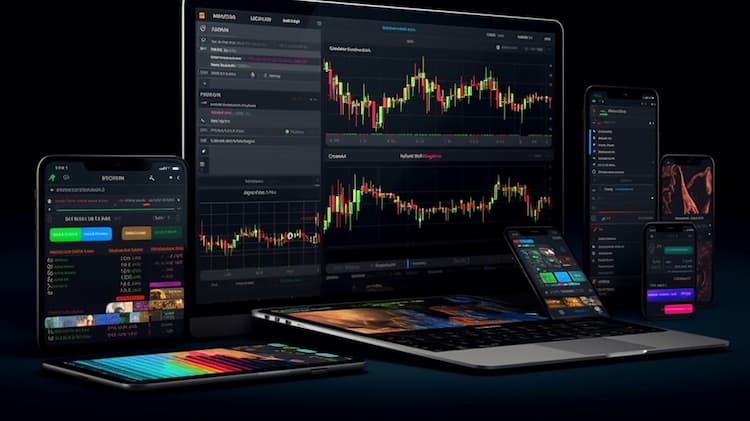
What are the risks associated with investing in XLI?
When it comes to building wealth, investing in the right sectors and industries is crucial. However, it is important to acknowledge that every investment comes with its own set of risks. This is particularly true for the Industrial Select Sector SPDR Fund (XLI), an investment option that requires careful consideration of its associated risks before committing capital.
XLI Overview: Understanding the Industrial Select Sector SPDR Fund
The Industrial Select Sector SPDR Fund (XLI) is an exchange-traded fund designed to mirror the performance of companies operating in the industrial sector. Like any investment, it is vital to comprehend the risks entailed in investing in XLI.
Market Volatility:
One of the primary risks of investing in XLI is market volatility. The industrial sector is susceptible to various factors, such as economic conditions, geopolitical events, and changes in government regulations. These factors can lead to significant price fluctuations in the XLI ETF, which may result in potential losses for investors.
Sector-Specific Risks:
Investors should also consider the sector-specific risks associated with XLI. As an ETF focusing on industrial companies, XLI is subject to its own unique challenges. Factors like technological advancements, competition, and shifts in consumer demand can directly impact the performance of these companies and, subsequently, the XLI ETF.
For example, advancements in technology may render certain industrial processes obsolete, affecting the profitability and growth prospects of the companies held in the XLI ETF. Likewise, increased competition or changes in consumer preferences can influence the demand for industrial products, potentially impacting the overall performance of XLI.
Sources:
To gather more information on XLI and its associated risks, you may refer to sources such as State Street Global Advisors and Investopedia.
XLI ETF and Its Potential Risks
What are the risks associated with investing in the XLI ETF?
Investing in the XLI ETF entails market risks, including volatility in the industrial sector and exposure to sector-specific challenges. Fluctuations in the price of the XLI ETF can result in potential losses for investors.
 XLI overlap What are the rIsks associated with investing in XLI?
XLI overlap What are the rIsks associated with investing in XLI?
How can market volatility impact the XLI ETF?
Market volatility can lead to rapid price movements in the XLI ETF. Economic conditions, geopolitical events, and regulatory changes are among the factors that contribute to such volatility. Investors in XLI should be prepared for potential price fluctuations.
What are the sector-specific risks associated with the XLI ETF?
The XLI ETF focuses on industrial companies, and any challenges faced by the industrial sector can directly affect its performance. Technological advancements, competition, and changes in consumer preferences are some examples of factors that can impact the XLI ETF's performance. Investors should carefully assess these sector-specific risks before investing in XLI.
Potential Mitigation Strategies
While investing in XLI carries certain risks, there are strategies that investors can employ to mitigate those risks:
Diversification: One effective risk management strategy is to diversify your investment portfolio. By spreading your investments across various sectors and asset classes, you can reduce the impact of any specific risk associated with a particular sector, including the industrial sector. Diversification allows you to potentially offset losses in one area with gains in another.
Stay Informed: Keeping yourself updated on the latest news and developments in the industrial sector is crucial. By staying informed about economic indicators, geopolitical events, and regulatory changes, you can make more informed investment decisions regarding XLI. This knowledge can help you anticipate potential risks and adjust your investment strategy accordingly.
Research and Analysis: Conduct thorough research and analysis on the companies held within the XLI ETF. Evaluate their financial health, competitive positioning, and ability to adapt to changing market conditions. By assessing the individual companies' fundamentals, you can gain insights into their potential performance and identify any red flags that may pose risks to the XLI ETF.
Consult with a Financial Advisor: Seeking guidance from a qualified financial advisor can provide valuable insights and help you navigate the risks associated with investing in XLI. An experienced advisor can assess your risk tolerance, investment goals, and time horizon to provide personalized advice and recommend suitable strategies for managing the risks specific to XLI.
Investing in the Industrial Select Sector SPDR Fund (XLI) can offer opportunities for growth, but it is important to understand and evaluate the associated risks. Market volatility and sector-specific challenges are among the key risks to consider. By implementing risk mitigation strategies such as diversification, staying informed, conducting thorough research, and seeking professional advice, you can enhance your chances of making informed investment decisions regarding XLI.
Remember, investing always carries inherent risks, and it is essential to tailor your investment approach to your individual circumstances and risk tolerance.
Source 1: XLI issuer website Source 2: Reuters article about XLI
XLI quote and analysis
Discover the top holdings, correlations, and overlaps of ETFs using our visualization tool.
Our app allows you to build and track your portfolio.
To learn more about the XLI Industrial Select Sector SPDR Fund, access our dedicated page now.
FAQ
What are the risks associated with investing in XLI?
Some risks associated with investing in XLI, the Industrial Select Sector SPDR Fund, include general market risks, economic conditions affecting the industrial sector, volatility in industrial stocks, regulatory changes impacting the sector, competition within the industry, and the performance of individual companies within the ETF. It is important to consider these risks and conduct thorough research before making investment decisions.
How to find symbols of the stocks in XLI?
You can find the symbols of the stocks held by XLI by referring to the ETF's prospectus, the fund manager's website, or financial websites that provide information on ETF holdings. These sources typically list the individual stocks and their corresponding ticker symbols included in the XLI ETF.
Are there any alternatives to XLI for investing in the industrial sector?
Yes, there are alternative ETFs and investment options available for investing in the industrial sector. Some examples include the Vanguard Industrials ETF (VIS), the iShares U.S. Industrials ETF (IYJ), and other mutual funds or actively managed funds that focus on the industrial sector. It is recommended to compare the features, costs, and performance of different investment options and consider individual investment goals before making a decision.
What is XLI stock?
XLI is not a stock itself but an exchange-traded fund (ETF) that represents the Industrial Select Sector. It provides investors with exposure to a diversified portfolio of stocks in the industrial sector.
What is XLY in stock sectors?
XLY refers to the Consumer Discretionary Select Sector SPDR Fund, an exchange-traded fund that tracks the performance of the Consumer Discretionary Select Sector Index. It includes stocks from sectors such as retail, media, travel, leisure, and other consumer discretionary industries.



